PHOTOS: WORLD OF A U.S. COLORED TROOP REGIMENT
Shown in Civil-War-Era Photos and Illustrations
By Hoag Levins
 | |
 April 13, 2003
April 13, 2003

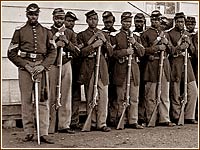
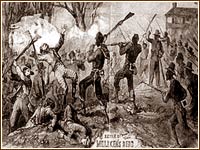
|
|
Hundreds of thousands of African Americans served during the Civil War. Immediately after President Lincoln signed the Emancipation Proclamation in January, 1863, the Federal government authorized the formation of Union Army's U.S. Colored Troops regiments (above, left). Those black soldiers were particularly adept at hand-to-hand combat like that celebrated in the period illustration (above, right) of the battle of Miliken's Bend. Both images show units other than the 22nd.
|
|
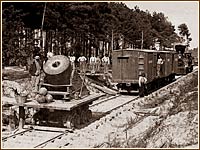
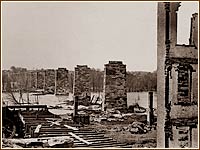
|
|
Formed of New Jersey recruits in the opening days of 1864, the 22nd U.S. Colored Troops Infantry Regiment was sent south into the battle for the military and governmental hub of the Confederacy: Richmond Virginia. The regiment took part in the seige of Petersburg, the gateway to Richmond. Above, left is one of the rail-mounted mortars used in the seige that ultimately destroyed Petersburg and its crucial railroad facilities, including the bridge to Richmond (above, right).
|
|
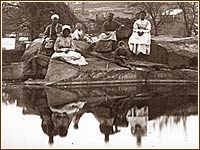

|
|
Near the same destroyed railroad bridge (above, left) are slaves freed by the Union Army action. One of the Union Army supply wagon trains, above, right, snakes forward as far as the eye can see down a main road through the city of Petersburg toward Richmond, twenty miles to the north.
|
|
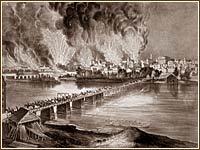
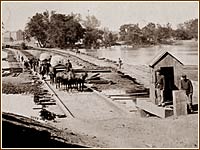
|
|
The seige of Petersburg and Richmond went on for eleven months. The above, left, period illustration depicts the bombardment of the Confederate capital. By April of 1865, Union troops, including the 22nd regiment, had moved across the James River on pontoon bridges (above, right) to occupy the remains of city.
|
|
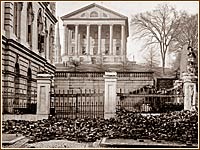

|
|
The first units of Abraham Lincoln's army to march into the ruins of what had been the capital of the Confederate slave states were U.S. Colored Troops Regiments. They found the Confederacy's capitol building (above, left) perched above a scene of utter devastation. Above, right is a view of that same capitol building in the distance from what had been the heart of Richmond.
|
|

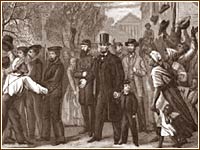
|
|
Among the many duties of the Union Army troops in Richmond was the setting up of refugee camps to house the slaves they had freed (above, left). The 22nd and other U.S. Colored Troops regiments of the Richmond occupational force were on hand as President Lincoln and his son, Tad, visited the conquered city. Lincoln was hailed through the streets by freed slaves as depicted in this period illustration (above, right). Ten days later, when the President was assassinated in a theater in Washington, the 22nd was one of the army units dispatched to scour the Maryland countryside for his assailants.
|
|
All Rights Reserved © 2003, Hoag Levins
HoagL@earthlink.net
About this Web site
|









